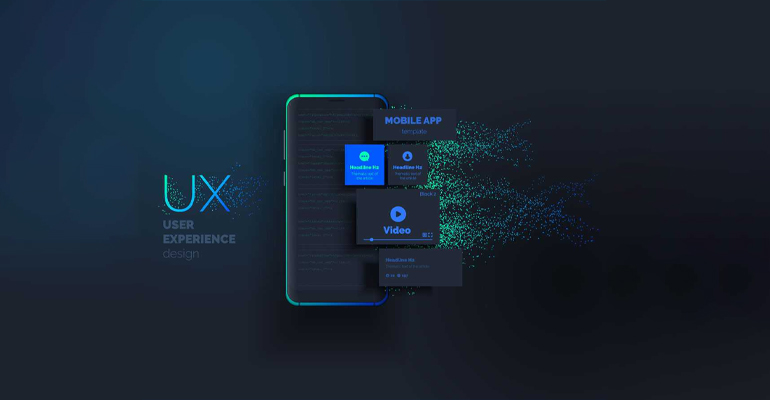Personalized Learning Pathways in EdTech: Your FAQs Answered for 2025

Note: This blog post was updated on March 17, 2025, to reflect the latest trends and advancements in educational technology. In the ever-evolving world of educational technology (EdTech), personalized learning pathways have emerged as a game-changer. As we move further into 2025, the demand for tailored educational experiences continues to grow, driven by advancements in AI, data analytics, and adaptive learning systems. This FAQ-style blog post dives into the critical aspects of personalized learning pathways, their benefits, and how they are shaping the future of education. What Are Personalized Learning Pathways? Personalized learning pathways refer to customized educational journeys designed to meet the unique needs, strengths, and goals of individual learners. Unlike traditional one-size-fits-all approaches, these pathways leverage data-driven insights and adaptive technologies to create a more engaging and effective learning experience. In 2025, personalized learning pathways are powered by sophisticated algorithms that analyze student performance, preferences, and learning styles. This allows educators to deliver content that is not only relevant but also optimized for each learner’s pace and comprehension level. Why Are Personalized Learning Pathways Important in 2025? The importance of personalized learning pathways in 2025 cannot be overstated. Here’s why: Enhanced Student Engagement: By tailoring content to individual interests and abilities, learners are more likely to stay motivated and engaged. Improved Learning Outcomes: Customized pathways ensure that students grasp concepts thoroughly before moving on, reducing knowledge gaps. Efficiency: Learners can progress at their own pace, avoiding the frustration of being held back or rushed. Data-Driven Insights: Educators gain valuable insights into student performance, enabling them to provide targeted support. According to a recent report by EdTech Digest, schools and institutions adopting personalized learning pathways have seen a 30% increase in student performance and satisfaction. How Do Personalized Learning Pathways Work? Personalized learning pathways rely on a combination of technologies and methodologies: Adaptive Learning Systems: These systems use AI to adjust content difficulty based on real-time student performance. For example, if a student struggles with a math concept, the system provides additional resources or simpler problems to reinforce understanding. Learning Analytics: Data collected from quizzes, assignments, and interactions are analyzed to identify patterns and tailor future content. Microlearning: Bite-sized lessons are delivered to address specific knowledge gaps, making learning more manageable and less overwhelming. Gamification: Incorporating game-like elements such as badges, leaderboards, and rewards keeps learners motivated and engaged. For a deeper dive into how adaptive learning systems enhance student performance, check out this Madavi Agency article. What Are the Challenges of Implementing Personalized Learning Pathways? While the benefits are clear, implementing personalized learning pathways is not without challenges: Data Privacy Concerns: Collecting and analyzing student data raises privacy issues. Institutions must ensure compliance with regulations like GDPR and FERPA. Resource Intensity: Developing and maintaining adaptive learning systems requires significant investment in technology and training. Equity Issues: Not all students have equal access to the devices and internet connectivity needed for personalized learning. Resistance to Change: Educators and institutions may be hesitant to adopt new technologies due to a lack of familiarity or fear of disruption. How Can Educators Get Started with Personalized Learning Pathways? For educators looking to implement personalized learning pathways, here are some actionable steps: Invest in the Right Tools: Choose adaptive learning platforms that align with your institution’s goals and budget. Platforms like Khan Academy and DreamBox are excellent starting points. Train Your Staff: Ensure that teachers and administrators are well-versed in using these tools and interpreting data insights. Start Small: Pilot the program with a single class or subject before scaling up. Monitor and Iterate: Continuously gather feedback and adjust the pathways to better meet student needs. For more insights on microlearning and its role in EdTech, read this Madavi Agency blog. What Does the Future Hold for Personalized Learning Pathways? As we look ahead, the future of personalized learning pathways is incredibly promising. Here are some trends to watch: AI-Powered Tutoring: Virtual tutors powered by AI will provide real-time assistance, answering questions and offering explanations tailored to each student’s needs. Immersive Learning: Virtual and augmented reality will create immersive learning environments, making complex concepts easier to understand. Lifelong Learning: Personalized pathways will extend beyond traditional education, supporting professional development and lifelong learning. Global Collaboration: Learners from around the world will collaborate on projects, gaining diverse perspectives and skills. FAQs About Personalized Learning Pathways 1. What is the difference between personalized learning and adaptive learning? Personalized learning is a broader concept that includes tailoring content, pace, and goals to individual learners. Adaptive learning is a subset of personalized learning that focuses on adjusting content difficulty in real-time based on performance. 2. Can personalized learning pathways work for all subjects? Yes, personalized learning pathways can be applied to any subject, from math and science to literature and history. The key is to use the right tools and methodologies for each discipline. 3. How do personalized learning pathways benefit teachers? Teachers gain access to detailed insights into student performance, allowing them to provide targeted support and focus on areas where students need the most help. 4. Are personalized learning pathways expensive to implement? While there are upfront costs, the long-term benefits—such as improved student outcomes and reduced dropout rates—often outweigh the initial investment. 5. What role does AI play in personalized learning pathways? AI is the backbone of personalized learning pathways, enabling real-time adjustments, predictive analytics, and personalized recommendations. Conclusion As we navigate the educational landscape of 2025, personalized pathways are proving to be a transformative force. By leveraging cutting-edge technologies and data-driven insights, educators can create learning experiences that are not only effective but also deeply engaging. Whether you’re an educator, administrator, or lifelong learner, now is the time to embrace the power of personalized learning. For more insights and resources on EdTech innovations, visit Madavi Agency.
UX Education Strategies for Building Amazing EdTech Products

In the fast-paced world of educational technology, UX education has become a game-changer. EdTech companies are realizing that creating products with excellent user experience is key to winning over students and educators alike. From design thinking to gamification, the field of UX Education is evolving rapidly, shaping how learners interact with digital tools and platforms. This shift has an impact on everything from classroom management to social emotional learning, making it crucial for EdTech developers to master the art of user-centered design. To create winning EdTech products, companies need to focus on several key areas. These include perfecting user flows, conducting thorough UX research, and designing intuitive data dashboards. Additionally, they must consider factors like student engagement, visual memory, and learning models. By adopting a mobile-first approach and aligning with curriculum standards, EdTech developers can create tools that truly enhance learner agency. This article will explore strategies to build EdTech products that not only meet user needs but also revolutionize the educational landscape. Understanding the UX Education Landscape The UX Education landscape is a complex and dynamic environment that requires a deep understanding of both educational principles and user experience design. As EdTech startups gain popularity, they face unique challenges in creating products that truly enhance learning experiences. Unique Challenges in UX Education One of the biggest hurdles for EdTech companies is ensuring satisfactory usability. Many platforms struggle to create interfaces that are intuitive for both teachers and students . This is particularly evident when introducing new technologies like AR/VR, which users may find challenging to navigate. Additionally, EdTech products must address concerns about data security and privacy, as stakeholders need assurance that crucial information will be protected . Key Stakeholders in EdTech Understanding and engaging with various stakeholders is crucial for success in the EdTech space. School administrators, teachers, and parents all play significant roles in the adoption and use of educational technology. Interestingly, students, who are the end-users, are often underrepresented in the buying process . This creates a unique challenge for EdTech companies to balance the needs of decision-makers with those of the actual users. The Impact of UX on Learning Outcomes Well-designed UX Education products has the power to significantly influence learning outcomes. By applying learning science principles to user flows, EdTech tools can support students in learning and retaining new concepts more effectively . For instance, products that provide opportunities for peer collaboration and support social-emotional learning tend to create more engaging and effective learning experiences. To create truly impactful EdTech products, companies must integrate insights from both learning sciences and UX design. This collaborative approach ensures that educational content is not only easy to use but also optimized for effective learning . By focusing on these aspects, EdTech companies can develop products that stand out in a crowded marketplace and deliver real value to educators and learners alike. Essential UX Design Principles for EdTech User-centered design is crucial for creating effective EdTech products. This approach considers how people learn and physically interact with tools, leveraging commonalities in learning backed by science . By focusing on user needs, EdTech designers can create more intuitive and engaging learning experiences. User-Centered Design Approach To implement user-centered design, EdTech teams should conduct thorough user research, considering factors like classroom environment, internet connectivity, and physical interactions with the tool . This approach helps designers solve real challenges faced by teachers and students, enhancing engagement and delight in the learning process. Accessibility and Inclusivity Designing for accessibility and inclusivity is not only ethical but also makes good business sense. An estimated 15-20% of the world’s population lives with some form of disability . EdTech products should accommodate various types of disabilities, including temporary ones, to ensure a wider reach and better user experience for all. Gamification and Engagement Gamification has emerged as a powerful tool to enhance user engagement and learning in EdTech. By incorporating game-like elements such as points, badges, and challenges, EdTech products can significantly elevate the experience and effectiveness of their programs . For example, Duolingo uses gamification at every stage, with features like streak counts and internal currencies to keep users motivated . To implement these principles effectively, EdTech designers should: Conduct user testing with diverse groups, including those with disabilities Use inclusive visuals and language in the product Implement gamification elements that align with learning objectives Ensure the product works well with assistive technologies By focusing on these essential UX design principles, EdTech companies can create more engaging, accessible, and effective learning tools that cater to a wide range of users and learning styles. Integrating Learning Science into UX Design Integrating learning science into UX design is crucial for creating effective EdTech products. By combining principles from cognitive psychology and instructional design, developers can craft interfaces that enhance learning outcomes and user engagement. Cognitive Load Theory in Interface Design Cognitive Load Theory (CLT) plays a significant role in shaping UX Education. This theory, proposed by John Sweller in the late 1980s, suggests that the best learning happens when the environment aligns with human cognitive capacity . CLT identifies three types of cognitive load: intrinsic, extraneous, and germane. To optimize learning, designers should minimize extraneous load and focus on germane load, which directly contributes to learning . Practical applications of CLT in UX Education include: Breaking complex concepts into smaller, manageable parts Using visual aids like diagrams and charts Providing clear, step-by-step instructions Eliminating non-essential information that may distract learners Scaffolding and Progressive Disclosure Scaffolding, a concept rooted in Vygotsky’s social learning theory, involves providing temporary support to learners as they develop new skills . In UX Education, this translates to: Offering context-sensitive help Gradually reducing support as learners gain competence Using progressive disclosure to reveal features incrementally Progressive disclosure can be implemented through techniques like: Layered explanations, moving from general to detailed information Guided questioning to direct learner thinking Templates that guide document or presentation construction Adaptive Learning Algorithms Adaptive learning algorithms serve as the backbone of personalized learning experiences in EdTech. These algorithms

